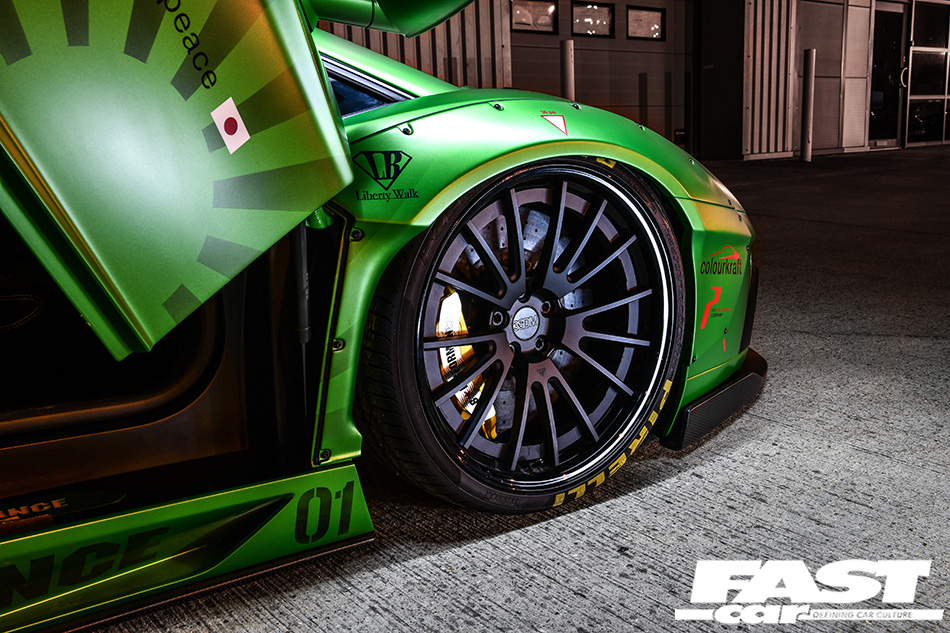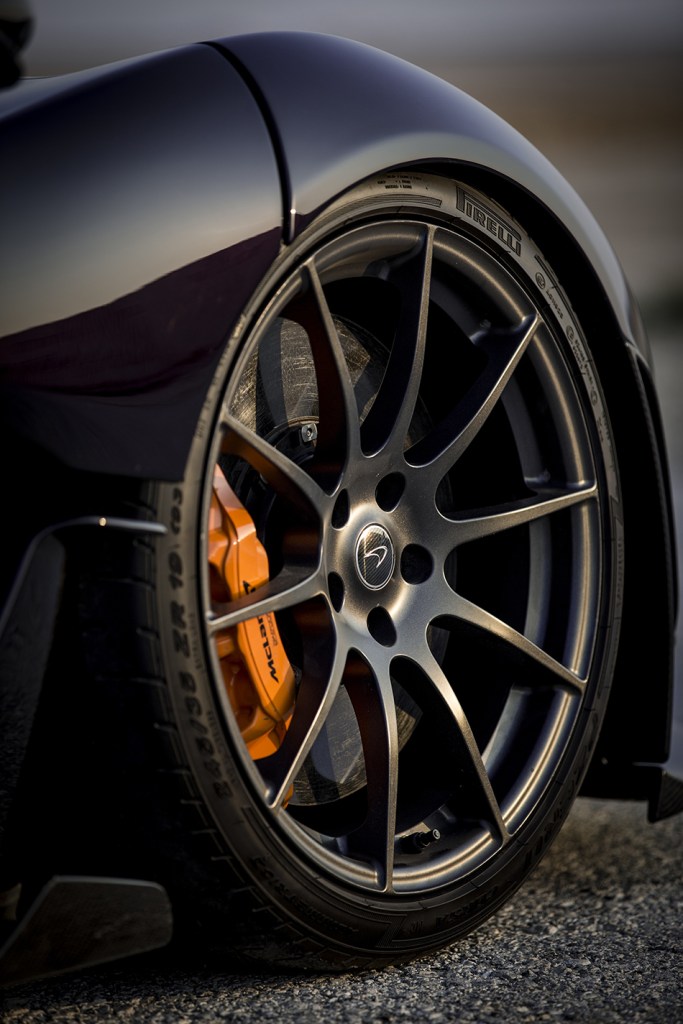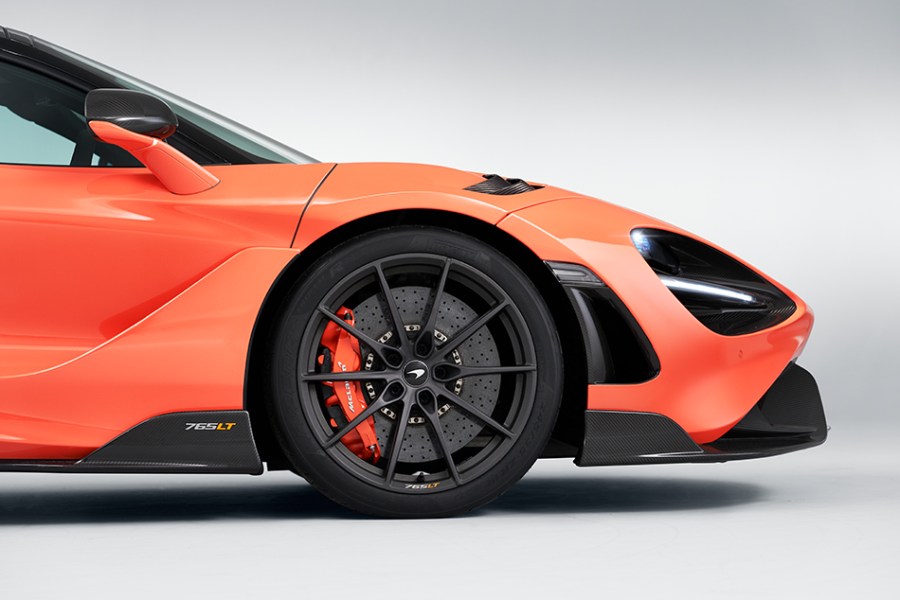You’ve likely heard of carbon ceramic brakes. But how do they work? And are they better than their steel counterparts? We answer all in our guide.
When it comes to high-performance vehicles, one of the most crucial components is the brakes. Carbon ceramic brakes are a popular choice for premium, luxury and sports cars due to the superior performance and durability they offer. But what exactly are carbon ceramic brakes? How do they differ from traditional performance brakes? And what are the advantages of upgrading to them? Let’s take a closer look…
What are carbon ceramic brakes?
Carbon ceramic brakes are commonly found in high-performance sports and race cars. They are made from a composite material of carbon fibers and ceramic particles, offering superior durability and heat dissipation than traditional steel brakes. However, they come at a higher cost and may not always be necessary for regular street driving.
Advantages of using carbon ceramic brakes
Often referred to as ‘carbon-ceramic’ or ‘ceramic’ brakes, they are advanced braking systems frequently installed in sports cars and race cars from top brands like Porsche or Ferrari. These brakes are made using advanced composite materials that consist of carbon fibers and ceramic particles. The unique combination of these materials provides excellent thermal conductivity and a higher coefficient of friction than conventional iron discs used in most vehicles – basically, they grip harder and aren’t as affected by heat build-up!
Thanks to the use of these advanced materials, carbon ceramic brakes provide several benefits over traditional steel brakes. These include impressive weight savings, making them an ideal option for high-performance vehicles looking to shed some pounds without compromising on braking performance. Additionally, they boast exceptional durability with a longer lifespan than regular brake systems while being corrosion-resistant and requiring less maintenance due to their superior wear resistance.
When it comes to braking performance under extreme temperatures and high speeds on the track or during acceleration tests, they outperform conventional iron discs by reducing brake fade while maintaining consistent stopping power. However, these benefits come at a higher cost due to their complex manufacturing process, making them a popular choice for racing applications or exotic sports and hypercars that prioritize durability and performance over cost.

How do they work?
Carbon ceramic brakes use a composite material of carbon fibers and ceramic particles. When you press the brake pedal and the brakes engage, friction generates heat, causing the material to grip the rotor tightly. Ceramic brakes offer superior durability, stopping power, and weight reduction compared to iron-based brakes.
Differences between regular brakes and carbon ceramic brakes
In terms of braking systems for automotive applications, significant differences exist between the regular and carbon ceramic variants. Carbon ceramic brakes are made up of a composite material containing graphite and silicon carbide, in addition to a resin that creates a matrix composite with excellent corrosion resistance and durability properties.
In contrast, standard brake rotors tend to use cast iron discs that wear down over time due to heat-related issues like thermal conductivity problems. Brake lines in conventional braking systems can suffer from brake fade at extreme temperatures, impacting the vehicle’s stopping ability. The rotors are designed to withstand high speeds on track use and offer low weight combined with unmatched longevity compared to their more common counterparts.
Upgrading to carbon ceramic brakes
When considering an upgrade to high-performance brakes for your ride, there are several options available. These systems have grown in popularity due to their impressive performance and durability compared to traditional iron-based brake systems. Upgrading to a carbon ceramic brake system can provide vastly improved braking power and wear resistance, reduced unsprung weight, and better thermal shock resistance (making them ideal for track and race cars), but it’s essential to weigh up the costs of upgrading versus the benefits before making a decision.
Costs associated with carbon ceramic brakes
Let’s not mess about here, carbon ceramic brakes are pricey. We mean properly pricey. You can expect to pay anywhere between $3000 to $15,000 (more on exotic hypercars) for a set of rotors! But are they really worth it?
Well, yes. If you value performance, they are almost impossible to beat for a street-legal car. Carbon ceramic brake systems are an exceptional choice for those who demand top-of-the-line braking power. With their carbon-ceramic rotorsand beefy performance calipers, these systems offer superior braking performance that stands up to extreme temperatures and wear resistance. While they do come with a steep price tag due to their high manufacturing costs and expensive replacement parts, their longevity makes them a great investment for owners of race and track cars.
When considering an upgrade, it is important to consider factors such as track use or daily commuting mileage as well as compatibility with your car and wheel fitment. It’s not just the initial cost to be aware of either, but every time you need replacement brake pads or rotors, the costs will be far higher than with traditional iron discs.

How to maintain carbon ceramic brakes
They are incredibly expensive – we’ve already established that – so if you have just splashed out a small fortune on new brakes you’re going to want to look after them. And, caring for carbon ceramic brakes does require a different approach to regular iron discs. Of course, it goes without saying that regular inspection is important to check for wear and tear on the ceramic discs and brake pads. But where things differ is when it comes to cleaning. Not your brakes specifically, but even your wheels.
Never use regular heavy-duty wheel cleaners on cars with carbon ceramic discs. They are very sensitive to cleaning products, plus their porous nature means the harsh chemicals in wheel cleaners will sink deep into the material causing discoloration, reduced performance, and potentially ruining your very expensive discs!
The good news is that cars with carbon ceramic discs shouldn’t even need harsh wheel cleaners; they emit very little brake dust, meaning you can clean your wheels with nothing more than some warm soapy water and a pressure washer. If, however, your wheels are caked in road grime and you do need to use a dedicated wheel cleaner, it’s best to remove the wheel and clean it off the car to avoid contaminating those very costly brakes.
So, should you upgrade to them?
That depends. They are becoming increasingly popular in high-performance vehicles and have been the pinnacle for braking systems in many race cars for several years. They offer several benefits over traditional steel brakes, including increased stopping power, reduced weight, and improved durability. The unique makeup of the carbon ceramic material allows for better heat dissipation and less brake fade, even under extreme conditions. So, if you’re looking to gain a competitive edge on the racetrack or have the very best brakes you can find on your street car, then yes you should upgrade.
However, they can come with a hefty price tag. And unless you’re frequently finding the limits of traditional iron rotors – and they are some exceptionally good discs and pads for performance cars out there – then perhaps the cost is difficult to justify. It really does depend on what you want from your car and your own personal circumstances.
But if you were to ask, ‘are carbon ceramic brakes any good?’ then the answer would be a resounding ‘yes’. They’re brilliant!









